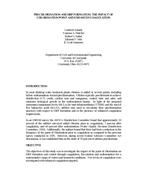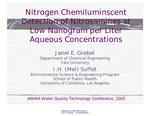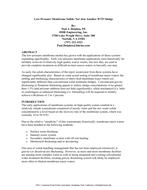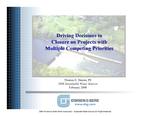Provide PDF Format
AWWA QTC97064
- Prechlorination and DBP Formation: The Impact of Chlorination Point and Enhanced Coagulation
- Conference Proceeding by American Water Works Association, 01/01/1997
- Publisher: AWWA
$12.00$24.00
In most drinking water treatment plants, chlorine is added at several points including before sedimentation. Chlorination prior to sedimentation is termed prechlorination and is typically used to achieve disinfection (CT) credit, oxidize iron and manganese, control taste and odor and minimize biological growth in sedimentation basins. In light of the proposed maximum contaminant levels (MCLs) for total trihalomethanes (TTHMs) and the sum of five haloacetic acids (HAA5), utilities may need to reevaluate their prechlorination practices with respect to disinfection byproduct (DBP) and enhanced coagulation requirements. The objective of this study was to investigate the impact of the point of chlorination on DBP formation and control through coagulation, flocculation and sedimentation for a representative range of waters and treatment conditions.
Related Products
AWWA WQTC62562
Nitrogen Chemiluminscent Detection of Nitrosamines at Low Nanogram per Liter Aqueous Concentrations..
$12.00 $24.00
AWWA JAW62002
Journal AWWA - Population Growth and Climate Change Will Pose Tough Challenges for Water Utilities..
$15.00 $30.00
AWWA SOURCES66471
Driving Decisions to Closure on Projects with Multiple Competing Priorities..
$12.00 $24.00





